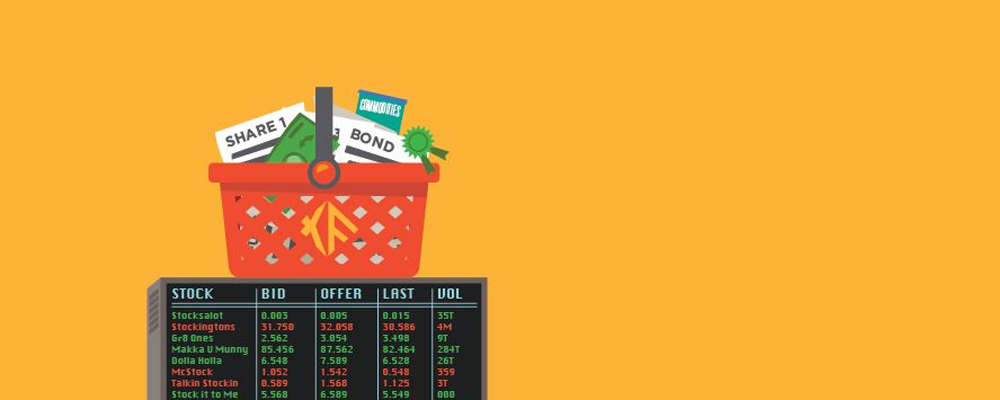-
Consumer
-
Investing
- Investing basics
-
Deciding how to invest
-
Ethical investing
-
Managing your investment
- Online investing platforms
-
Types of investments
-
Bank regulatory capital
-
Binary options
-
Bonds
-
Cash investments
-
Crowdfunding
-
Cryptocurrencies
-
Derivatives
-
Exchange-traded funds
-
Foreign exchange trading
-
Gold and other commodities
-
Investment software packages and seminars
-
Managed funds
-
Peer-to-peer lending
-
Property investment
-
Property syndicates
-
Shares
-
Wholesale investments
-
Bank regulatory capital
- Getting advice
- Everyday finance
- KiwiSaver & Superannuation
-
Unregistered businesses
-
Investing
-
Finance professionals
-
Services
-
Accredited bodies
-
Administrators of financial benchmarks
- Auditors
-
Authorised body under a financial advice provider licence
-
Client money or property services provider
-
Climate Reporting Entities (CREs)
-
Crowdfunding service providers
-
Crypto asset service providers
-
Directors
-
Derivatives issuers
-
Discretionary Investment Management Service (DIMS)
- Financial advice provider
-
Financial adviser
- Financial Institutions
- Financial market infrastructures
-
Independent trustees
-
Interposed persons under the financial advice regime
- Managed investment scheme manager
-
Market operators
-
Offer disclosure for equity and debt offers
- Offers of financial products
-
Peer-to-peer lending service providers
-
Supervisors
-
Accredited bodies
- Focus areas
- Legislation
-
Licensed & reporting entities
-
Online Services
-
Services
-
About
- People & leadership
-
Board
- Regulatory approach
- Enforcing the law
-
Investor capability
-
Corporate publications
- Careers Document library
- News & Insights Document library
- Scams Document library
-
Contact
-
When to contact us
-
Make a complaint
-
Official Information Act (OIA) requests
-
Make a protected disclosure (whistleblowing)
-
Frequently asked questions
-
When to contact us
Page last updated: 17 December 2020
Exchange-traded funds
Exchange-traded funds (ETFs) can be a simple and affordable way of investing in the sharemarket. ETFs enable you to invest in a diverse range of investments, through either a one-off lump sum or a regular savings plan. Introduced in the 1990s, ETFs are one of the world’s fastest-growing investment products.

What are ETFs
An exchange-traded fund (ETF) is a fund made up of a ‘basket’ of investments, usually shares, bonds, commodities or currencies. You can compare it to buying a mixed case of wine, which someone puts together for you, and saves you picking all the individual bottles. So you do not directly own the individual bottles, but a share in the case itself.
Risks
Since most ETFs are passive, their value will go up and down in line with the market. They won’t modify their approach during a downturn in the market. You cannot control the individual investments made within the ETF.
Traded on the stock exchange
Unlike traditional managed funds , ETFs are traded on the stock exchange. This means you can buy and sell units based on the available price just like shares rather than having to wait for a fund manager to set a price. ETFs also often have lower entry amounts and lower fees than traditional managed funds.
They track a market index
Most ETFs offered in New Zealand are ‘passive’ investments. They track a market index, which means the value of units in the ETF goes up or down in line with the index they are tracking.
There are some ‘active’ ETFs. In an active ETF, investment managers assess what is happening in the market and buy and sell financial products in line with the investment objective of the fund.
Returns can be affected by timing or exchange rates
Sometimes the returns on your ETF will be lower than the return on the index it is following. This is known as a tracking difference and could be due to timing issues as the ETF buys and sells assets. For ETFs with international exposure, be aware that fluctuating foreign exchange rates will affect returns.
EFTs listed on foreign exchanges have different levels of consumer protection
ETFs offered by New Zealand providers have to follow New Zealand law. This means they must have a product disclosure statement (PDS), provide quarterly fund updates, and report annually to investors. They must be offered by a licensed manager with a licensed supervisor providing oversight, and they must follow continuous disclosure obligations. Be aware that ETFs listed on foreign exchanges may have different requirements and may have different levels of consumer protection.
How to reduce risk
Before you invest, ensure that you research what the EFT invests in and costs or fees you may be liable for.
Like shares, pricing can vary based on supply and demand. You should always read the PDS to ensure you understand any further financial or liquidity risks.
What does the ETF invest in?
When choosing an ETF, make sure you find out exactly what it invests in. Unlike traditional managed funds, there are no standardised names, so read up to find out what products, geographical areas and sectors an ETF you are considering includes.
Does the ETF invest heavily in one area?
Find out whether an ETF heavily invests in one area, such as one industry or sector. You might want to ensure you spread your risks by investing in a more diverse ETF or spread your exposure through multiple ETFs.
How volatile is the ETF?
The law requires providers to use a risk indicator to show how volatile a fund is (how likely it is to go up and down in value). You will find this in the PDS, and in fund updates.
Costs
Costs are generally less than other managed funds although make sure you are comparing like with like (for example is the managed fund you are comparing also a passive fund or is it actively managed?). Be aware that although the annual management charge may be stipulated, other costs may be less visible, such as any tax incurred.